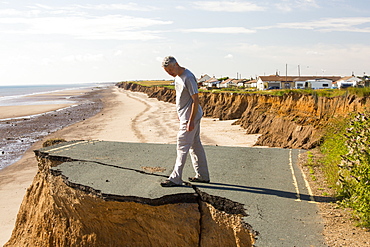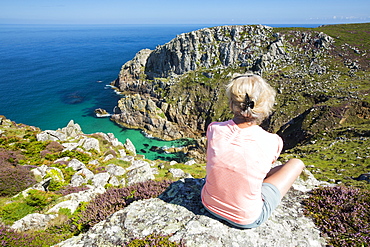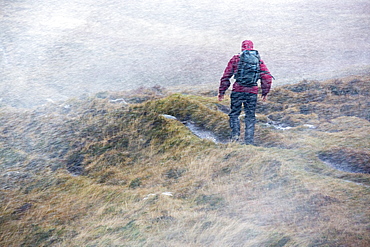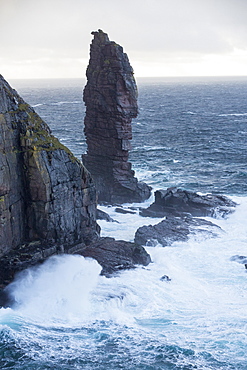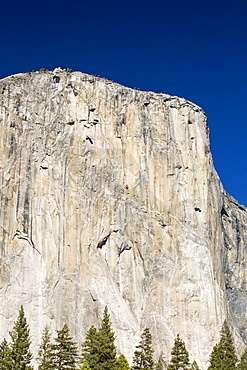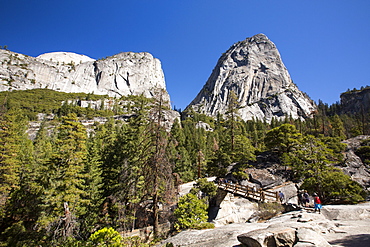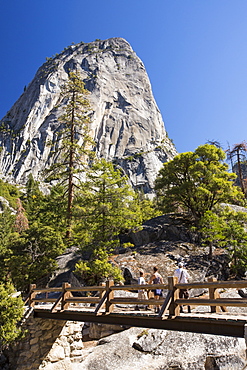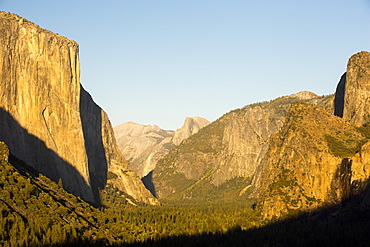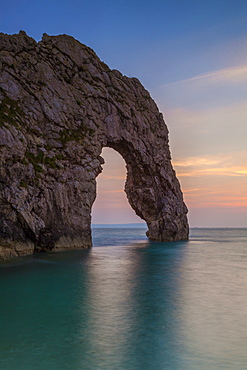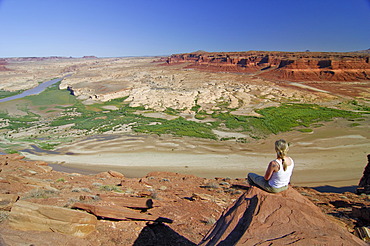Recent searches
Loading...
832-402431 - Beautiful rock formations in the desert of the American Southwest from above using a drone
832-400123 - Closeup view of applying cream on legs after shower
832-399207 - Red granite rocks, Tafoni, Calanches de Piana, Porto Bay, Porto, UNESCO World Heritage Site, Haute-Corse Department, West Coast, Corsica, Mediterranean Sea, France, Europe
832-399206 - Red granite rocks, Tafoni, Calanches de Piana, sunset, Porto Bay, Porto, UNESCO World Heritage Site, Haute-Corse department, west coast, Corsica, Mediterranean Sea, France, Europe
832-398459 - assortment delicious breakfast meal with yogurt
832-398800 - Roasted potatoes in the oven with spices and herbs
832-396909 - Bas reliefs in Hindue temple Brihadishwarar Temple Thanjavur, Tamil Nadu, India, Asia
1350-5116 - Old closed wooden doors, Dorut Tilovat Complex, Shakhrisabz, Uzbekistan
832-391827 - Wooden stairs to the ""Bear's Den"" Tafone Rock, Lapland, Inari, Finland, Europe
832-389735 - House facade, windows with weathered and closed shutters, old town, Bale, Istria, Croatia, Europe
832-388307 - Lying Buddha statue, transition to Nirvana, Wat Lokayasutha, Ayutthaya, Thailand, Asia
832-387713 - Weathered sign level crossing, Laguna Seca, Ruta 27, Puna, Salta Province, Argentina, South America
832-386056 - Red adobe houses, Abyaneh village, Esfahan Province, Iran, Asia
832-387576 - Old door lock with door handle on weathered wooden door, Baska, Island of Krk, Kvarner Gulf Bay, Croatia, Europe
832-387577 - Old rusty door lock on weathered wooden door, Baska, island of Krk, Kvarner Gulf Bay, Croatia, Europe
1116-45783 - Fried Eggs With Fried Potatoes And Sausages On Plate On Old Weathered Painted Table, Kiev, Ukraine
1116-45784 - Fried Eggs With Fried Potatoes And Sausages On Plate On Old Weathered Painted Table, Kiev, Ukraine
832-381770 - Shipwreck Plassy, ??stranded on the Finnish coast in 1960, Inis Oirr, Aran Islands, Ireland, Europe
857-95431 - A collapsed coastal road at between Skipsea and Ulrome on Yorkshires East Coast, near Skipsea, UK. The coast is composed of soft boulder clays, very vulnerable to coastal erosion. This section of coast has been eroding since Roman times, with many villages having disappeared into the sea, and is the fastest eroding coast in Europe. Climate change is speeding up the erosion, with sea level rise, increased stormy weather and increased heavy rainfall events, all playing their part.
857-95432 - A collapsed coastal road at between Skipsea and Ulrome on Yorkshires East Coast, near Skipsea, UK. The coast is composed of soft boulder clays, very vulnerable to coastal erosion. This section of coast has been eroding since Roman times, with many villages having disappeared into the sea, and is the fastest eroding coast in Europe. Climate change is speeding up the erosion, with sea level rise, increased stormy weather and increased heavy rainfall events, all playing their part.
857-95435 - A collapsed coastal road at near Aldbrough on Yorkshires East Coast, near Skipsea, UK. The coast is composed of soft boulder clays, very vulnerable to coastal erosion. This section of coast has been eroding since Roman times, with many villages having disappeared into the sea, and is the fastest eroding coast in Europe. Climate change is speeding up the erosion, with sea level rise, increased stormy weather and increased heavy rainfall events, all playing their part.
857-95433 - A collapsed coastal road at between Skipsea and Ulrome on Yorkshires East Coast, near Skipsea, UK. The coast is composed of soft boulder clays, very vulnerable to coastal erosion. This section of coast has been eroding since Roman times, with many villages having disappeared into the sea, and is the fastest eroding coast in Europe. Climate change is speeding up the erosion, with sea level rise, increased stormy weather and increased heavy rainfall events, all playing their part.
857-95437 - A collapsed coastal road at between Skipsea and Ulrome on Yorkshires East Coast, near Skipsea, UK. The coast is composed of soft boulder clays, very vulnerable to coastal erosion. This section of coast has been eroding since Roman times, with many villages having disappeared into the sea, and is the fastest eroding coast in Europe. Climate change is speeding up the erosion, with sea level rise, increased stormy weather and increased heavy rainfall events, all playing their part.
857-95436 - A collapsed coastal road at between Skipsea and Ulrome on Yorkshires East Coast, near Skipsea, UK. The coast is composed of soft boulder clays, very vulnerable to coastal erosion. This section of coast has been eroding since Roman times, with many villages having disappeared into the sea, and is the fastest eroding coast in Europe. Climate change is speeding up the erosion, with sea level rise, increased stormy weather and increased heavy rainfall events, all playing their part.
857-95434 - A collapsed coastal road at Barmston on Yorkshires East Coast, near Skipsea, UK. The coast is composed of soft boulder clays, very vulnerable to coastal erosion. This section of coast has been eroding since Roman times, with many villages having disappeared into the sea, and is the fastest eroding coast in Europe. Climate change is speeding up the erosion, with sea level rise, increased stormy weather and increased heavy rainfall events, all playing their part.
857-95438 - Smashed concrete sea defenses at Ulrome near Skipsea on Yorkshires East Coast, UK. The sea has eroded past the barriers and left them stranded further down the beach. The coast is composed of soft boulder clays, very vulnerable to coastal erosion. This section of coast has been eroding since Roman times, with many villages having disappeared into the sea, and is the fastest eroding coast in Europe. Climate change is speeding up the erosion, with sea level rise, increased stormy weather and increased heavy rainfall events, all playing their part.
1116-40156 - Higger Tor, Peak District National Park, Derbyshire, England, Europe
911-10836 - Granite sea cliffs at Bosigran on Cornwall's North Coast, UK.
911-10837 - Granite sea cliffs at Bosigran on Cornwall's North Coast, UK.
911-10835 - Granite sea cliffs at Bosigran on Cornwall's North Coast, UK.
911-10834 - Granite sea cliffs at Bosigran on Cornwall's North Coast, UK, with a woman sat overlooking the sea.
911-10750 - The Remains of the Godwin battery on the beach at Kilnsea at the head of Spurn point on Yorkshires East Coast, UK. Initially constructed during the First World War, the Godwin Battery was added to during the Second World War. It comprised of gun emplacements, search light, barracks, officers’ mess, and a hospital. This section of coastline is the fastest eroding coastline in Europe. The soft boulder clay cliffs are easily eroded and have been eroding since Roman Times, but recently the climate change impacts of increased stormy weather, increased heavy rainfall events and sea level rise have accelerated the rate of erosion. The average rate of attrition is 1.5metres per year, last year it was 5 metres.
911-10713 - Tourists on the summit of Moro Rock a granite outcrop viewpoint in the Sequoia National Park, Yosemite, USA at sunset.
911-10712 - Tourists on the summit of Moro Rock a granite outcrop viewpoint in the Sequoia National Park, Yosemite, USA.
911-10711 - A Mountain chain view from the summit of Moro Rock a granite outcrop viewpoint in the Sequoia National Park, Yosemite, USA, at sunset.
911-10749 - The Remains of the Godwin battery on the beach at Kilnsea at the head of Spurn point on Yorkshires East Coast, UK. Initially constructed during the First World War, the Godwin Battery was added to during the Second World War. It comprised of gun emplacements, search light, barracks, officers’ mess, and a hospital. This section of coastline is the fastest eroding coastline in Europe. The soft boulder clay cliffs are easily eroded and have been eroding since Roman Times, but recently the climate change impacts of increased stormy weather, increased heavy rainfall events and sea level rise have accelerated the rate of erosion. The average rate of attrition is 1.5metres per year, last year it was 5 metres.
911-10666 - Moorland stream waterfalls on the coast at Stoer in Assynt, Scotland, UK, blowing uphill in storm force winds, with a walker struggling past and getting a soaking.
911-10549 - The Old Man of Stoer, a sea stack in Assynt, Scotland, UK.
911-10557 - A lichen covered boulder on Beinn Ghlas, a Munro on the side of Ben Lawers.
911-10551 - Coastal scenery near Achmelvich in Assynt, North West Highlands, Scotland, UK.
911-10561 - The famous split rock of Clachtoll in Clachtoll, Assynt, Noth West Highlands, Scotland, UK.
911-10470 - Kings Canyon National Park, California, USA.
911-10468 - Folded metamorphic rock in Kings Canyon National Park, California, USA
911-10469 - Folded metamorphic rock in Kings Canyon National Park, California, USA
911-10312 - Badland scenery at sunset, Zabriskie Point in Death Valley which is the lowest, hottest, driest place in the USA, with an average annual rainfall of around 2 inches, some years it does not receive any rain at all.
911-10247 - El capitan with climbers barely visible in Yosemite National Park, California, USA.
911-10411 - Glowing light at sunset on cars winding through a forest in the Yosemite National Park, California, USA.
911-10262 - The Nevada Fall above the Yosemite Valley, California, USA.
911-10166 - Dunes collapsing at the head of the beach on the Northumberland coast after being undercut by a storm and high tide.
911-10274 - Badland scenery in Death Valley which is the lowest, hottest, driest place in the USA, with an average annual rainfall of around 2 inches, some years it does not receive any rain at all.
911-10265 - The Merced River in the Yosemite alley, near Yosemite village, California, USA.
911-10252 - A granite dome in Yosemite National Park, California, USA.
911-10286 - Badland scenery at Zabriskie Point in Death Valley which is the lowest, hottest, driest place in the USA, with an average annual rainfall of around 2 inches, some years it does not receive any rain at all.
911-10271 - A dead tree in the Little Yosemite Valley, Yosemite National Park, California, USA.
911-10260 - Reflections and a bridge crossing the Merced River, Yosemite Valley, Yosemite National Park, California, USA.
911-10268 - A pool above the Nevada Fall in the Little Yosemite Valley, Yosemite National Park, California, USA.
911-10273 - El Capitan, the most famous big wall in the Yosemite Valley, California, USA.
911-10256 - El Capitan probably the most famous climbing wall in Yosemite National Park, California, USA.
911-10287 - Badland scenery at Zabriskie Point in Death Valley which is the lowest, hottest, driest place in the USA, with an average annual rainfall of around 2 inches, some years it does not receive any rain at all.
911-10289 - Solar panels amongst Badland scenery in Death Valley which is the lowest, hottest, driest place in the USA, with an average annual rainfall of around 2 inches, some years it does not receive any rain at all.
911-10269 - A mountain trail and bridge above the Nevada Fall in the Little Yosemite Valley, Yosemite National Park, California, USA.
911-10261 - Reflections in the Merced River, Yosemite Valley, Yosemite National Park, California, USA.
911-10270 - A mountain trail and bridge above the Nevada Fall in the Little Yosemite Valley, Yosemite National Park, California, USA.
911-10288 - Badland scenery at Zabriskie Point in Death Valley which is the lowest, hottest, driest place in the USA, with an average annual rainfall of around 2 inches, some years it does not receive any rain at all.
911-10272 - El Capitan, the most famous big wall in the Yosemite Valley, California, USA.
911-10267 - A pool above the Nevada Fall in the Little Yosemite Valley, Yosemite National Park, California, USA.
911-10254 - Tourists in Yosemite National Park, California, USA.
911-10266 - A pool above the Nevada Fall in the Little Yosemite Valley, Yosemite National Park, California, USA.
911-10290 - Solar panels amongst Badland scenery in Death Valley which is the lowest, hottest, driest place in the USA, with an average annual rainfall of around 2 inches, some years it does not receive any rain at all.
911-10311 - Badland scenery at Zabriskie Point at sunset in Death Valley which is the lowest, hottest, driest place in the USA, with an average annual rainfall of around 2 inches, some years it does not receive any rain at all.
911-10195 - Volcanic rocks on Deception Island in the South Shetland Islands off the Antarctic Peninsular which is an active volcanic caldera.
911-10205 - A granite Tor and standing stone on the summit of Great Links Tor, on Dartmoor, Devon, UK.
911-10073 - A collapsed coastal road at Barmston on Yorkshires East Coast, near Skipsea, UK. The coast is composed of soft boulder clays, very vulnerable to coastal erosion. This sectiion of coast has been eroding since Roman times, with many villages having disappeared into the sea, and is the fastest eroding coast in Europe. Climate change is speeding up the erosion, with sea level rise, increased stormy weather and increased heavy rainfall events, all palying their part.
911-10074 - A Second world War lookout post leaning alarmingly and about to tumble over the edge of the cliff near Aldbrough on Yorkshires East Coast, UK. The coast is composed of soft boulder clays, very vulnerable to coastal erosion. This section of coast has been eroding since Roman times, with many villages having disappeared into the sea, and is the fastest eroding coast in Europe. Climate change is speeding up the erosion, with sea level rise, increased stormy weather and increased heavy rainfall events, all playing their part.
911-10071 - A collapsed coastal road at between Skipsea and Ulrome on Yorkshires East Coast, near Skipsea, UK. The coast is composed of soft boulder clays, very vulnerable to coastal erosion. This sectiion of coast has been eroding since Roman times, with many villages having disappeared into the sea, and is the fastest eroding coast in Europe. Climate change is speeding up the erosion, with sea level rise, increased stormy weather and increased heavy rainfall events, all palying their part.
911-10069 - Concrete sea defences at Beach Bank Caravan Park in Ulrome near Skipsea on Yorkshires East Coast, UK. The coast is composed of soft boulder clays, very vulnerable to coastal erosion. This section of coast has been eroding since Roman times, with many villages having disappeared into the sea, and is the fastest eroding coast in Europe. Climate change is speeding up the erosion, with sea level rise, increased stormy weather and increased heavy rainfall events, all playing their part.
911-10101 - Cornish coastal scenery at Porthmeor Cove near Zennor, UK, with Purple loosestrife (Lythrum salicaria) flowering in the foreground.
911-10070 - A collapsed coastal road at near Aldbrough on Yorkshires East Coast, near Skipsea, UK. The coast is composed of soft boulder clays, very vulnerable to coastal erosion. This sectiion of coast has been eroding since Roman times, with many villages having disappeared into the sea, and is the fastest eroding coast in Europe. Climate change is speeding up the erosion, with sea level rise, increased stormy weather and increased heavy rainfall events, all palying their part.
911-10066 - A collapsed coastal road at Easingotn on Yorkshires East Coast, near Skipsea, UK. The coast is composed of soft boulder clays, very vulnerable to coastal erosion. This sectiion of coast has been eroding since Roman times, with many villages having disappeared into the sea, and is the fastest eroding coast in Europe. Climate change is speeding up the erosion, with sea level rise, increased stormy weather and increased heavy rainfall events, all palying their part.
911-10100 - Cornish coastal scenery at Porthmeor Cove near Zennor, UK.
911-10068 - A collapsed coastal road at between Skipsea and Ulrome on Yorkshires East Coast, near Skipsea, UK. The coast is composed of soft boulder clays, very vulnerable to coastal erosion. This sectiion of coast has been eroding since Roman times, with many villages having disappeared into the sea, and is the fastest eroding coast in Europe. Climate change is speeding up the erosion, with sea level rise, increased stormy weather and increased heavy rainfall events, all palying their part.
911-10072 - A collapsed coastal road at between Skipsea and Ulrome on Yorkshires East Coast, near Skipsea, UK. The coast is composed of soft boulder clays, very vulnerable to coastal erosion. This sectiion of coast has been eroding since Roman times, with many villages having disappeared into the sea, and is the fastest eroding coast in Europe. Climate change is speeding up the erosion, with sea level rise, increased stormy weather and increased heavy rainfall events, all palying their part.
911-10067 - A collapsed coastal road near Skipsea on Yorkshires East Coast, UK. The coast is composed of soft boulder clays, very vulnerable to coastal erosion. This sectiion of coast has been eroding since Roman times, with many villages having disappeared into the sea, and is the fastest eroding coast in Europe. Climate change is speeding up the erosion, with sea level rise, increased stormy weather and increased heavy rainfall events, all playing their part.
911-9951 - Retreating glaciers in Wilhelmina Bay off Graham Land on the Antarctic Peninsular, which is one of the fastest warming places on the planet.
911-9956 - Icebergs oof Curverville Island on the Antarctic Peninsular, which is one of the fastest warming places on the planet.
911-9959 - Light on mountainous scenery in Graham Land in Wilhelmina Bay on the Antarctic Peninsular, which is one of the fastest warming places on the planet.
911-9953 - Icebergs oof Curverville Island on the Antarctic Peninsular, which is one of the fastest warming places on the planet.
911-9955 - Icebergs oof Curverville Island on the Antarctic Peninsular, which is one of the fastest warming places on the planet.
911-9954 - Icebergs oof Curverville Island on the Antarctic Peninsular, which is one of the fastest warming places on the planet.
911-9957 - Icebergs oof Curverville Island on the Antarctic Peninsular, which is one of the fastest warming places on the planet.
911-9950 - Retreating glaciers in Wilhelmina Bay off Graham Land on the Antarctic Peninsular, which is one of the fastest warming places on the planet.
911-9952 - Retreating glaciers in Wilhelmina Bay off Graham Land on the Antarctic Peninsular, which is one of the fastest warming places on the planet.
696-717 - Durdle Door, Lulworth Cove, Jurassic Coast, UNESCO World Heritage Site, Dorset, England, United Kingdom, Europe
832-369429 - Woman looking over the Glen Canyon National Recreation Area from the Hite viewpoint, Colorado Plateau, Utah, USA
832-369408 - Tuareg nomads with white Mehari riding dromedaries, Acacus Mountains, Libya
832-375954 - View from the Dead Horse Point State Park on the Colorado River, Utah, USA
























